2024 Jeep Gladiator Review: Minor Updates, But Still a Funky Truck


The verdict: The 2024 Jeep Gladiator is still one of the best (and coolest) off-road pickups you can buy, but you’ll pay (a lot) for its capability in reduced comfort, quietness, efficiency and refinement.
Versus the competition: The Gladiator is certainly not the most comfortable, quiet, efficient or refined mid-size truck, but name me another pickup with a removable roof and doors. Go on, I’ll wait.
It’s easy to dismiss the Jeep Gladiator as a long-wheelbase Wrangler with a pickup bed, because that’s essentially what it is — at least on paper. The experience, however, of driving and using a Gladiator is more than that. You still get all the fun parts of a Wrangler, like the removable roof and doors, super-butch military-inspired styling, a washable interior with drain plugs in the floor (just be careful about spraying the dashboard), and Jeep Wave interaction with other Wrangler and Gladiator drivers. Unfortunately, you also get Jeep’s now long-in-the-tooth Pentastar V-6 (the only engine offered), the vague handling and choppy ride of an off-road machine with solid axles front and rear, and the snap-together feel of the trim bits.
For the 2024 model year, the Gladiator gets most of the upgrades and updates that the 2024 Wrangler received, including a new dashboard with an updated Uconnect multimedia system, some overhead airbags, available power front seats and more. Unlike the Wrangler, you can also get a Mojave desert-runner trim level, which is the version I tested. It’s meant to go up against trucks like the Chevrolet Colorado ZR2 Bison and Toyota Tacoma TRD Pro. I drove a Gladiator Mojave for a week both on-road and off to see if the updates for the ‘24 model year have made the Gladiator more user-friendly, like they did for the Wrangler.

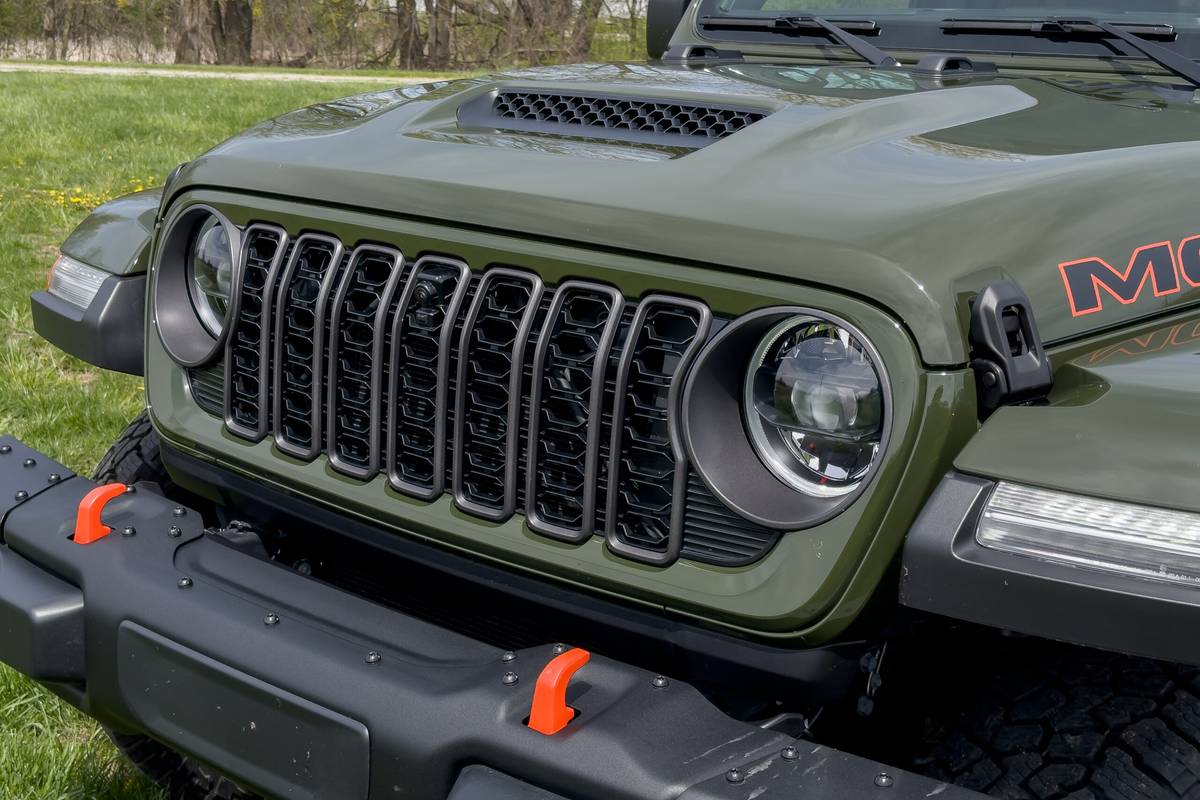
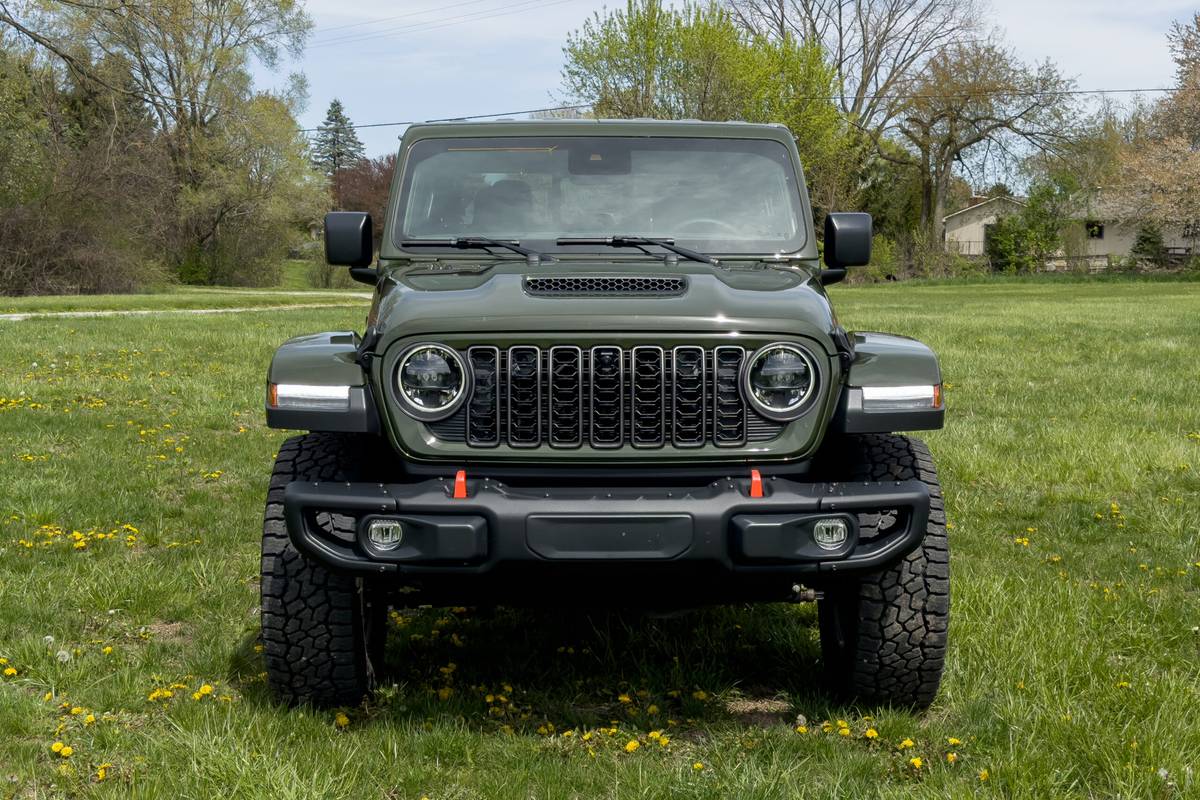
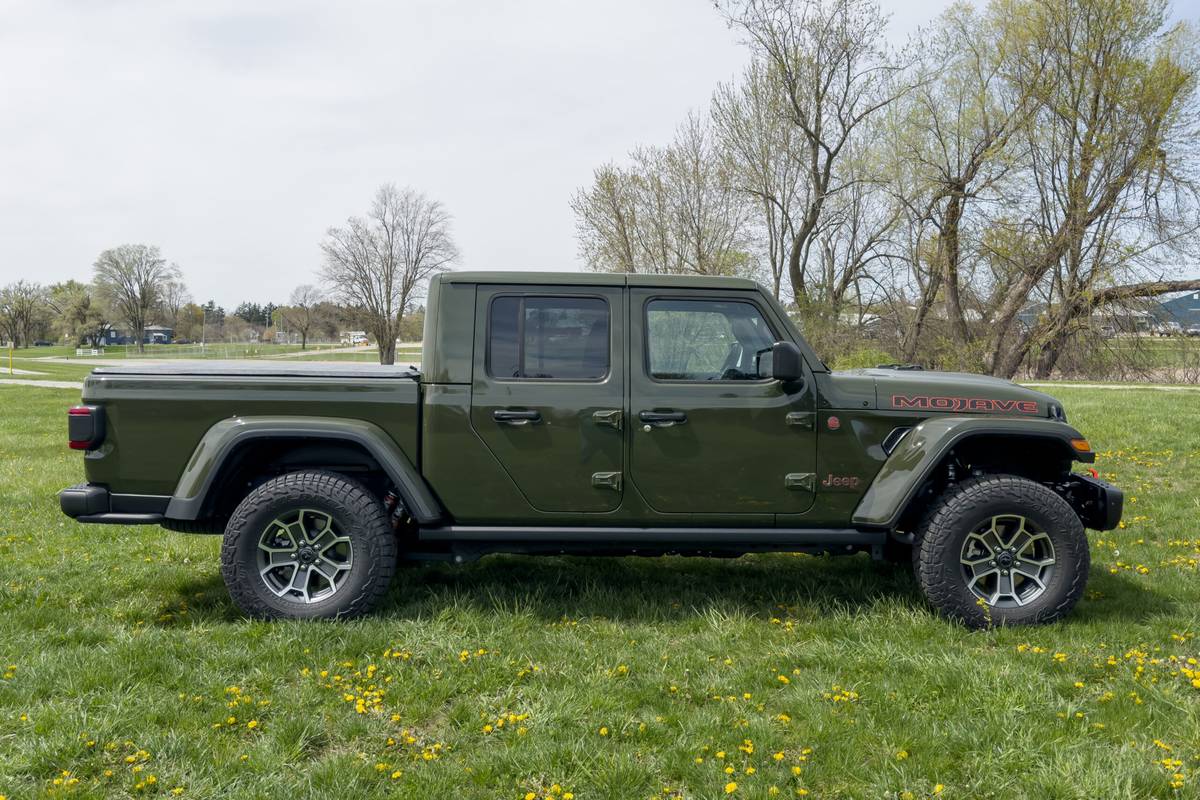
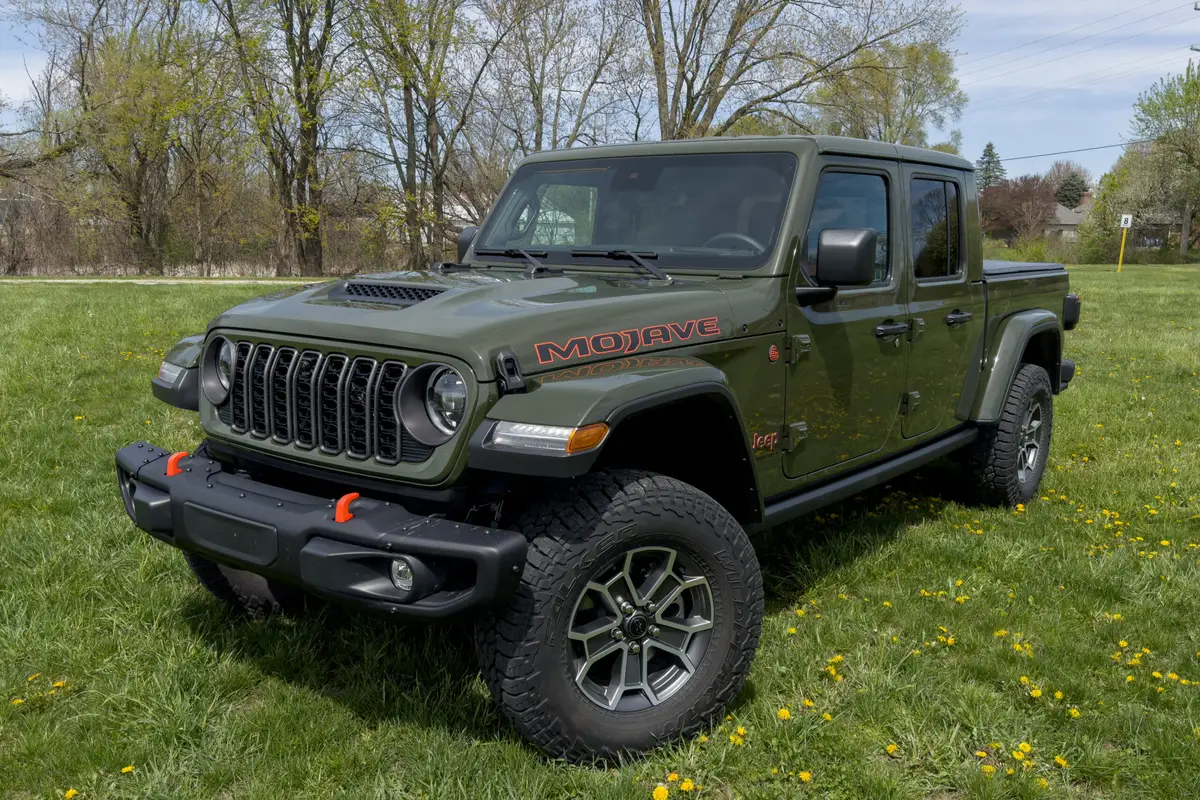
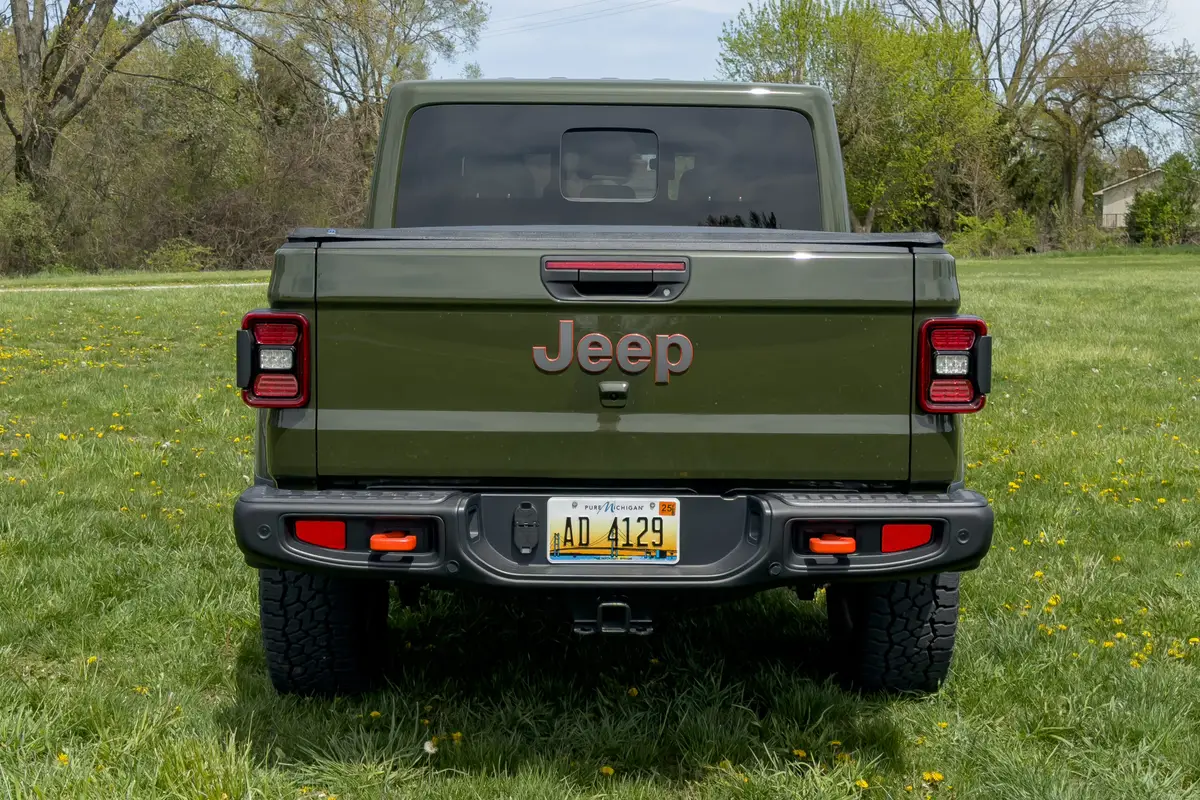


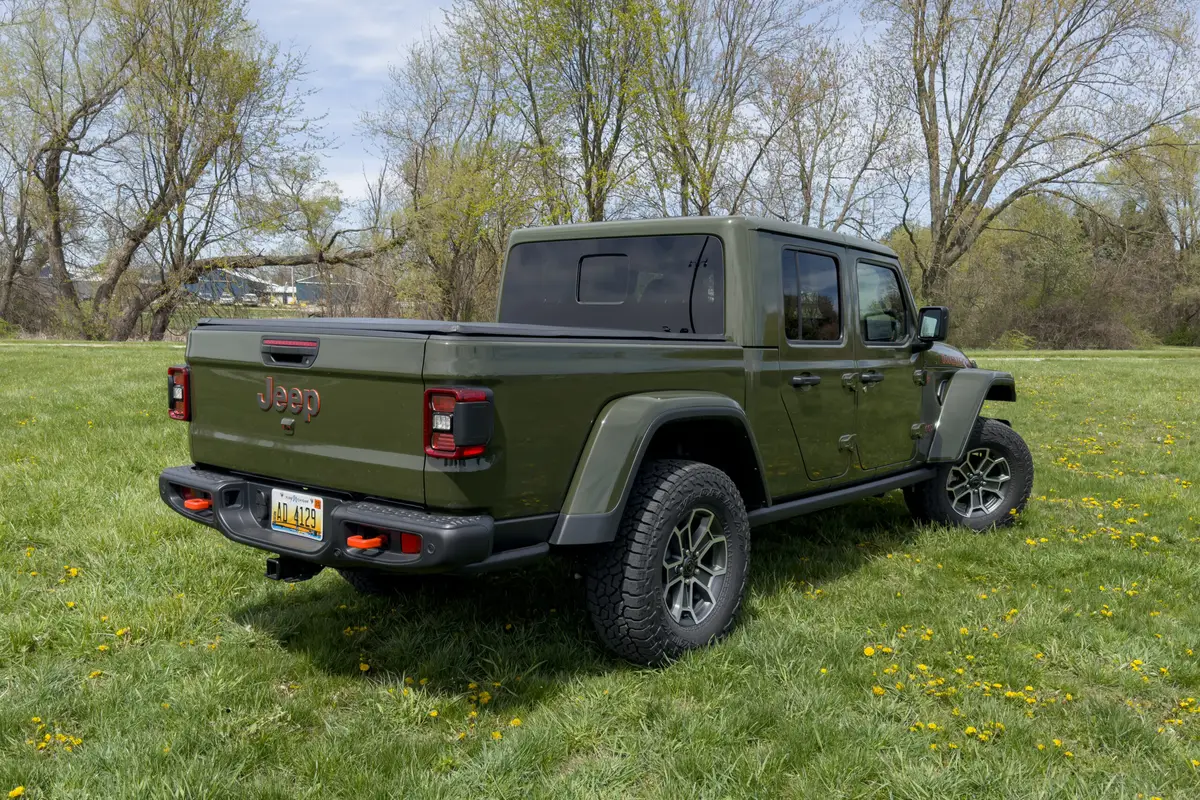
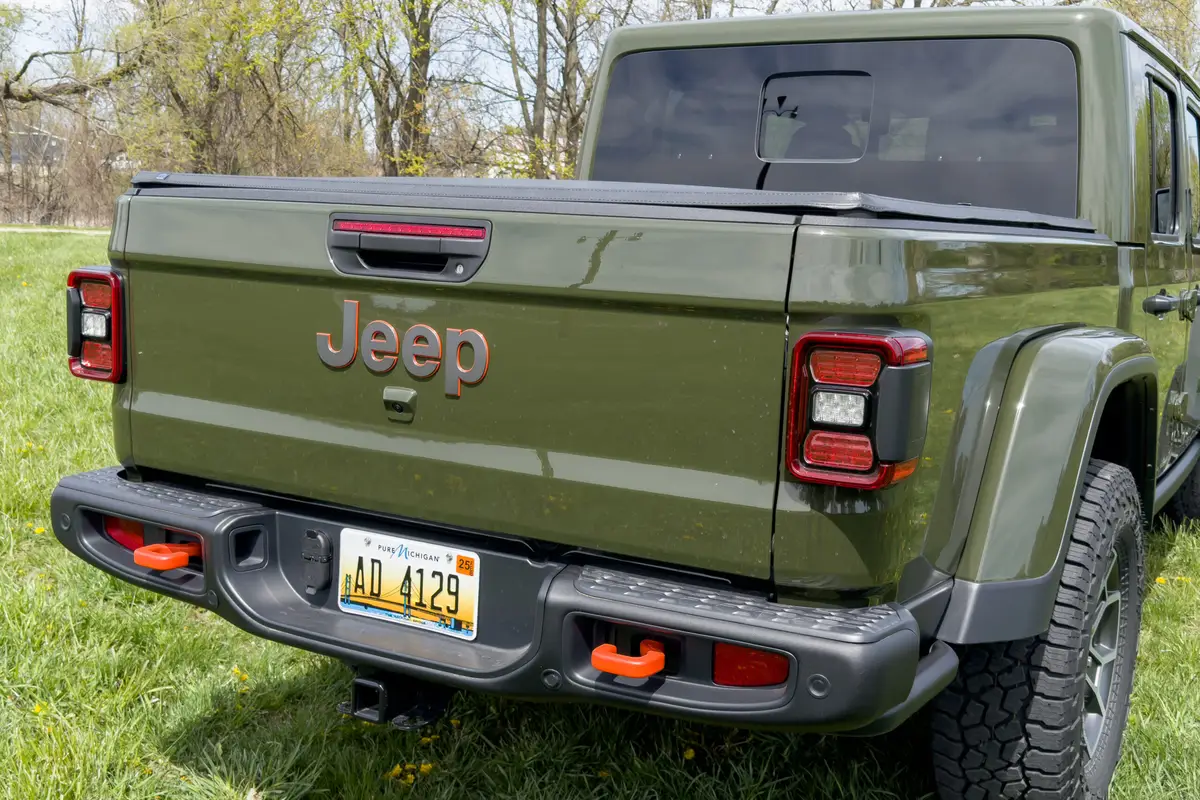










It Doesn’t Look Much Different
The Gladiator’s exterior changes for 2024 only involve things that could be easily changed. There’s a new seven-slot black grille that matches the ‘24 Wrangler’s, seven new wheel designs, a stealthily integrated windshield radio antenna and not much else that’s new. My test vehicle was a Mojave X trim, so it featured orange accents and tow hooks as opposed to the red ones on a Rubicon. Sarge Green paint looks amazing on any Jeep, but Mojave models (both the regular Mojave and the Mojave X) offer an optional green and black interior that just looks dynamite. The Mojave X also brings some fancier trim and features into the picture, such as a body-colored hard top and fender flares, Nappa leather upholstery and navigation. The script on the hood says “Mojave” in big block letters, but the circular badge on the fender says “Desert Rated” instead of Jeep’s traditional “Trail Rated.” It hints that there’s something about this Gladiator that’s a little different from Jeep’s more common Rubicon rock crawler.
Special Go-Fast Bits
What makes the Mojave special are the myriad bits underneath its stretched frame. Like all Gladiators, it uses a five-link coil spring rear suspension that’s a variant of what was used on the last-generation Ram 1500 pickup, along with rugged Dana 44 axles front and rear. But unlike other Gladiators, the Mojave comes with Fox 2.5-inch internal bypass shocks with remote reservoirs, Fox front hydraulic jounce bumpers, a 1-inch front lift, high-clearance fender flares and 33-inch all-terrain tires. It also has a selectable high-speed rear-locking differential that allows the rear wheels to be locked in 4-High mode, not just 4-Low like on most other Jeeps. All that is meant to help the Gladiator Mojave handle high-speed desert running far better than a Rubicon could, with components found in many other off-road trucks. The Gladiator’s Off-Road+ mode is also geared toward blasts across dunes and steppes.
None of this, however, means the Gladiator Mojave isn’t also a skilled rock crawler; it maintains much of the low-speed capability found in the Rubicon, though it does forgo the locking front differential and electronic disconnecting front sway bar found in that model. The Gladiator’s 285-horsepower, 3.6-liter Pentastar V-6 is mated to a standard six-speed manual transmission, but my test vehicle came equipped with an optional $2,500 eight-speed automatic. Part-time four-wheel drive is standard on the Mojave, but upgrading to the Mojave X brings Selec-Trac full-time 4WD instead.
This powertrain combination is either tried and true or old and tired, depending on your perspective. To be fair, it’s probably a little of both; the Pentastar V-6 has been in production for a long time now, so its bugs are largely worked out and it’s a known quantity for steady power delivery, with plentiful parts availability. It’s also coarser than many newer V-6 engines, with less power and torque. It’s thirsty, too, with an EPA rating of 19 mpg combined with the automatic transmission and 18 mpg combined with the manual. Until a rumored 4xe plug-in hybrid version of the Gladiator arrives, however, this is what you’re stuck with — and it’s really not that bad. No one driving a Gladiator Mojave is expecting to win stoplight drag races anyway, so its poky acceleration and copious noise really aren’t issues. The fact that the Gladiator can tow up to 7,700 pounds when properly equipped, and that it comes with a standard 2.72:1 low-range transfer case, is more important to the truck’s mission. It is, after all, a pickup truck. It’s just a pickup truck that can also blast over unpaved roads and scale slippery rock outcroppings.
Both of which it does effortlessly. I drove the Mojave on some washboard, pockmarked back roads around southeast Michigan at elevated speeds, and I can report that its off-road desert suspension works beautifully in such conditions, keeping the Gladiator planted, stable and true. You feel plenty of surface imperfections in the cabin, and it’s definitely noisy, but the thing feels built to military spec, and you won’t feel afraid to use it for its intended purpose. Delicate this truck is not.
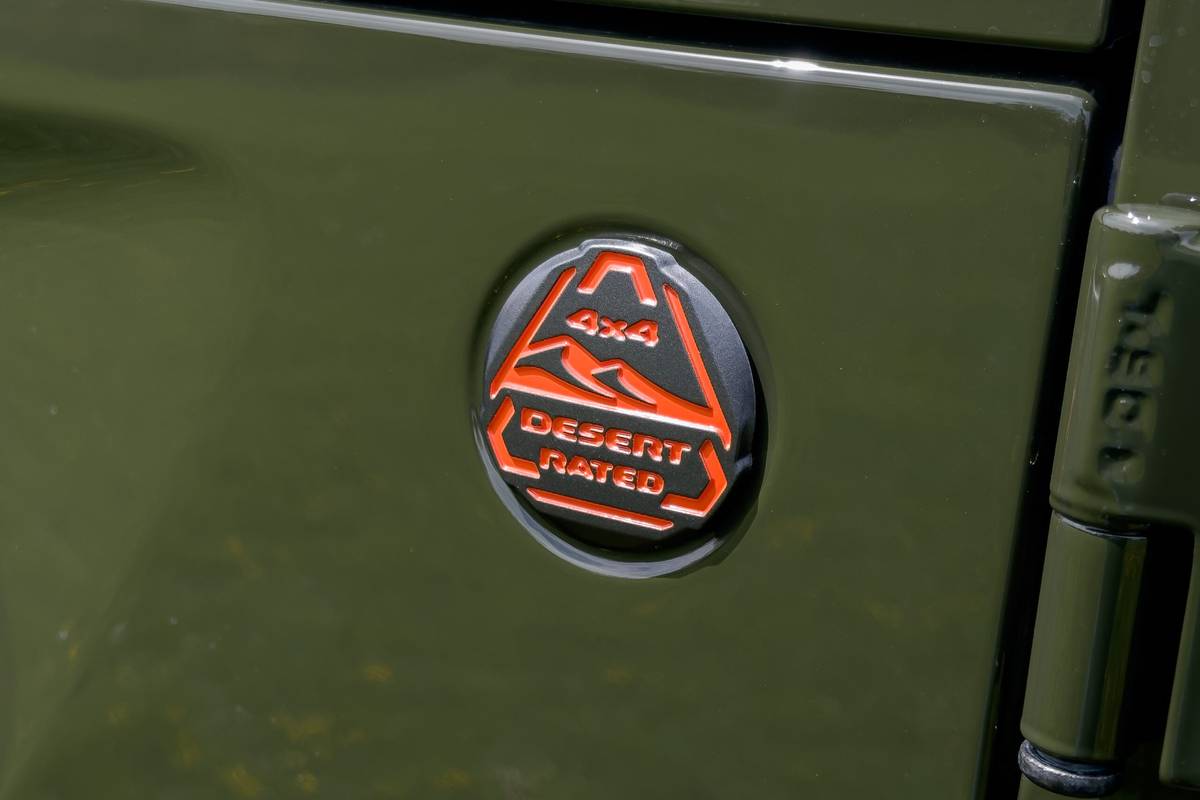
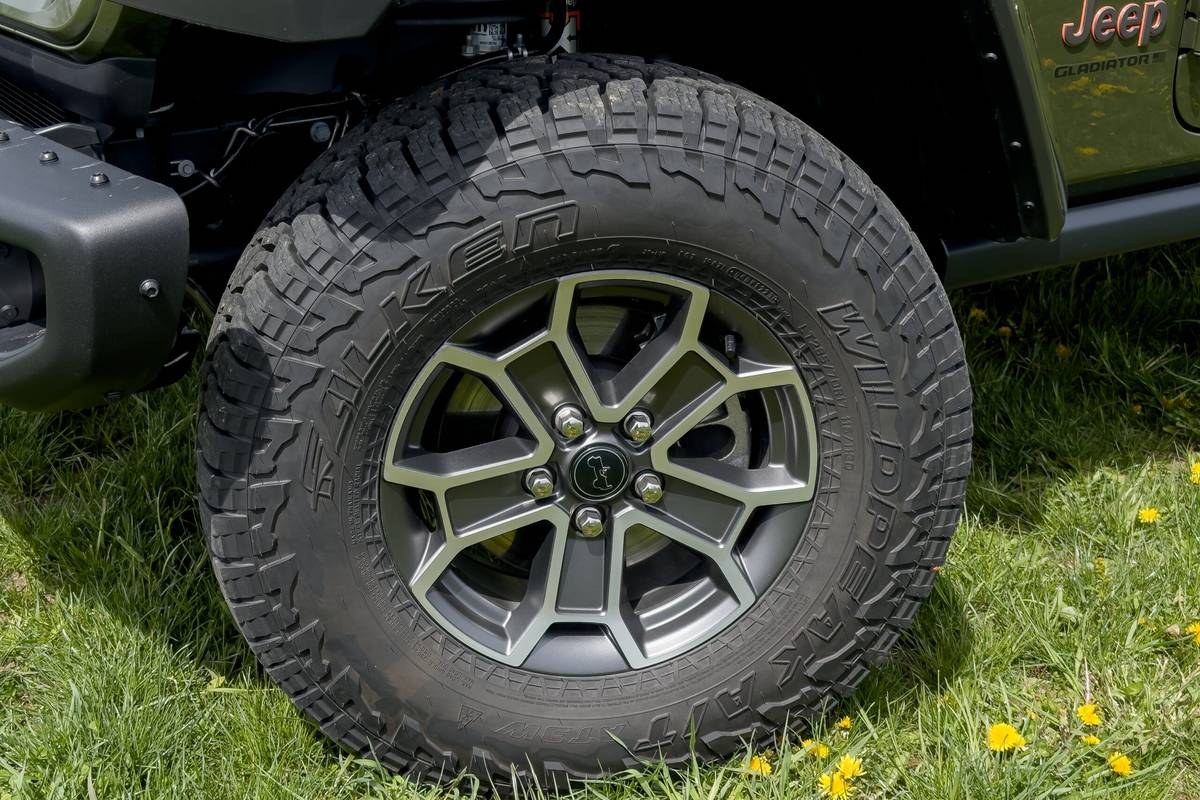

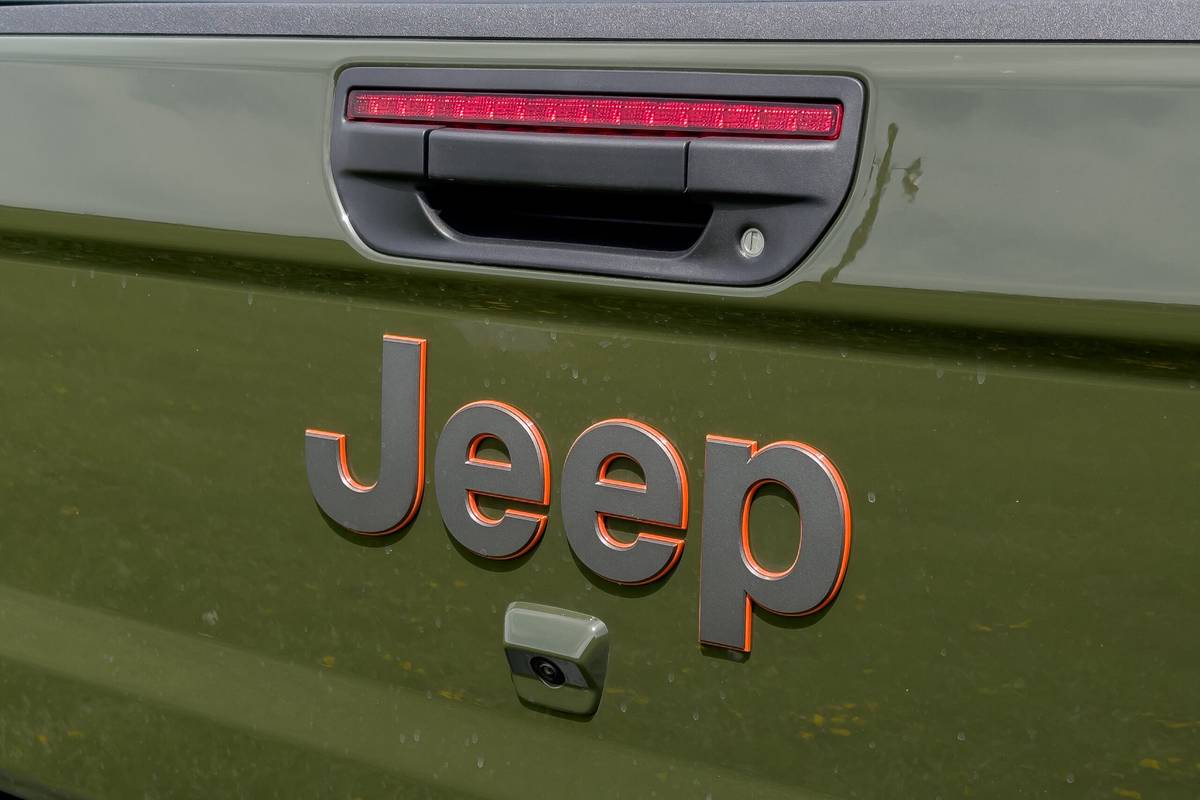

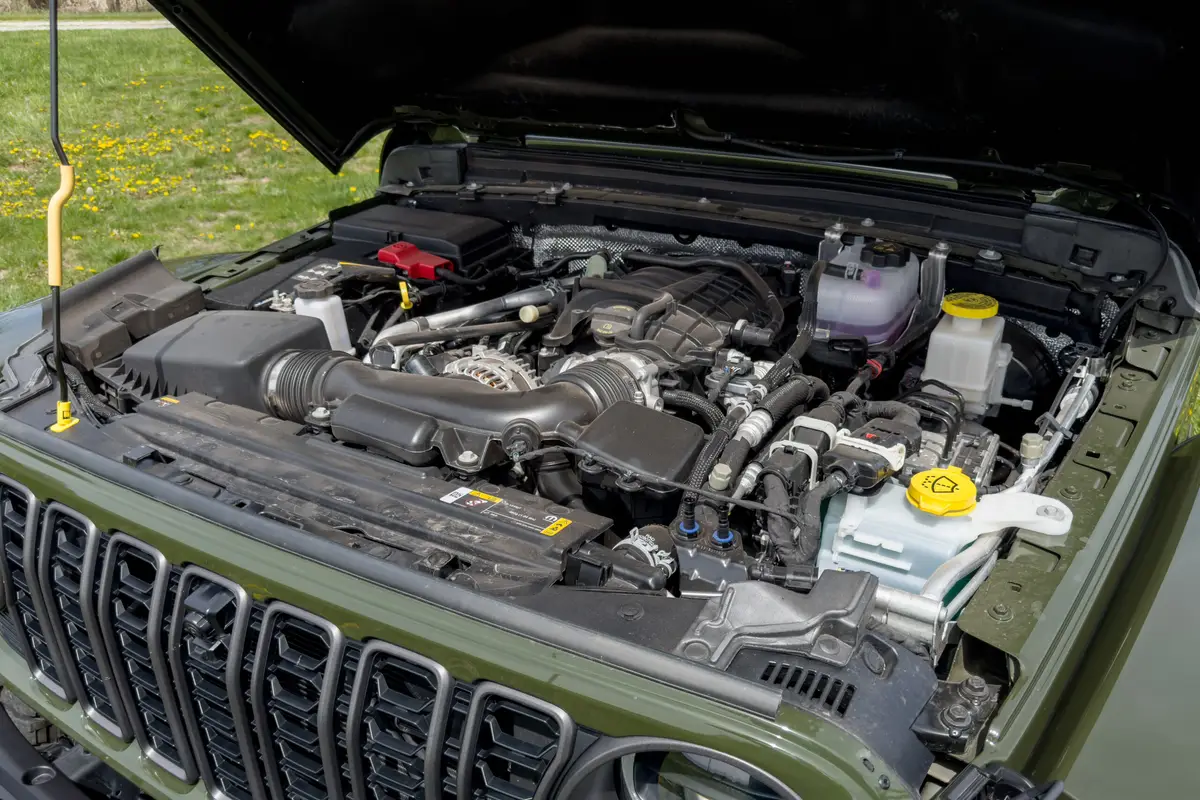






It’s also a skilled low-speed crawler, although a locking front differential would have been useful when I took it on an off-road course that was part of the Midwest Automotive Media Association’s 2024 Spring Rally in Elkhart Lake, Wis. (Due to plentiful rain in the days leading up to the event, the course had the consistency of chocolate pudding.) The Gladiator Mojave is still a Wrangler with an open trunk, though, with knobby off-road tires and a locking center and rear differential, so it was able to handle everything it slogged through with mucky aplomb. Wranglers might still be the ultimate Jeep, but this thing ain’t far behind.
The Gladiator handles much like a Wrangler on-road, too, with one notable difference: Ride quality is demonstrably better thanks to its longer wheelbase. The Gladiator’s upright, blocky construction still makes it feel like you’re piloting a sailboat down the highway, resulting in constant steering adjustments, and you’ll never forget that you’re driving one of the few remaining new vehicles with live axles front and rear — no independent front suspension here, unlike every other mid-size pickup on sale in the U.S. That affects everything about the vehicle, from how it drives to how it rides and stops. You’ll have to like the somewhat less refined driving experience that results if you’re going to regularly drive a Gladiator — or at least tolerate it as the price you pay for all the other neat stuff about the truck.
The Other Neat Stuff
Because there is a lot of other neat stuff that comes with a Gladiator, the foremost being its ability to turn into an open-air, street-legal dune buggy. It’s the only convertible pickup truck in the world, and the only one with doors that can be removed. This, of course, means the whole truck is built like a snap-together kit, which does lend itself to squeaks, rattles and a lot more wind noise than you’d get in something like a Chevrolet Colorado or Toyota Tacoma. But nothing beats the extraordinary feeling of wind-in-the-hair freedom you get when cruising “naked,” without a top or doors.
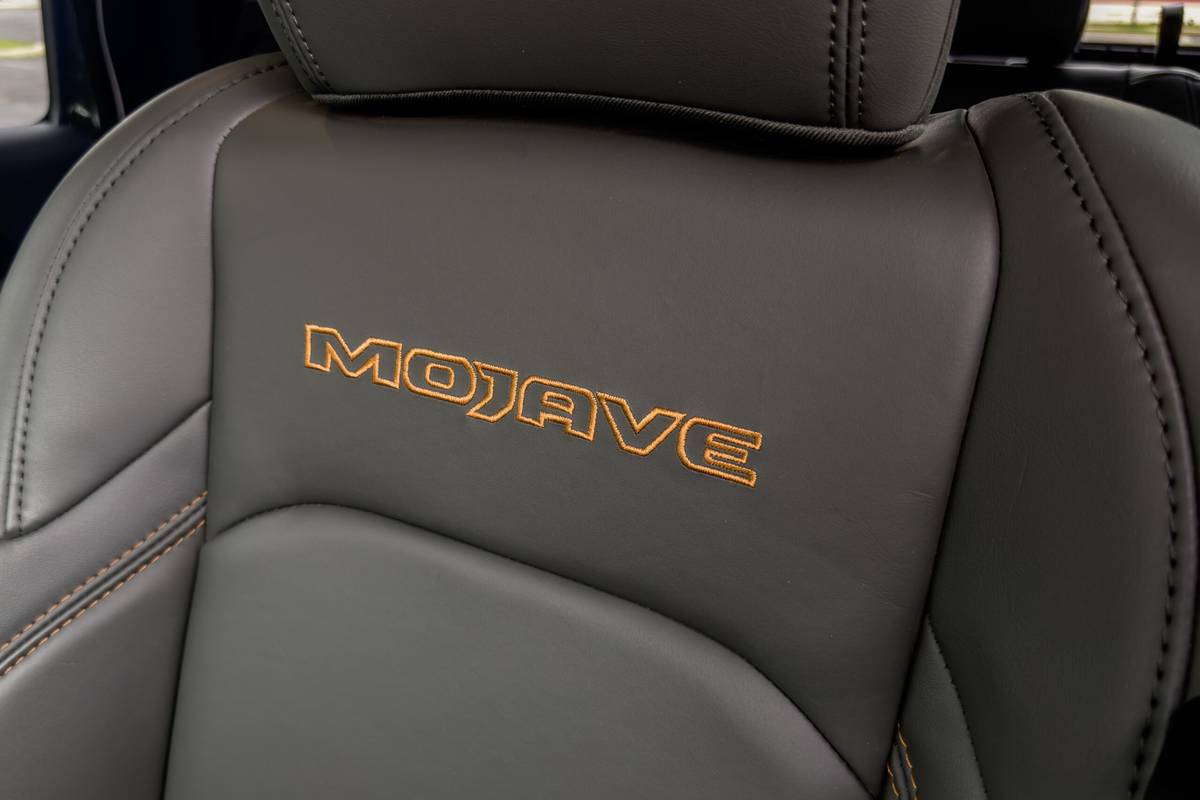
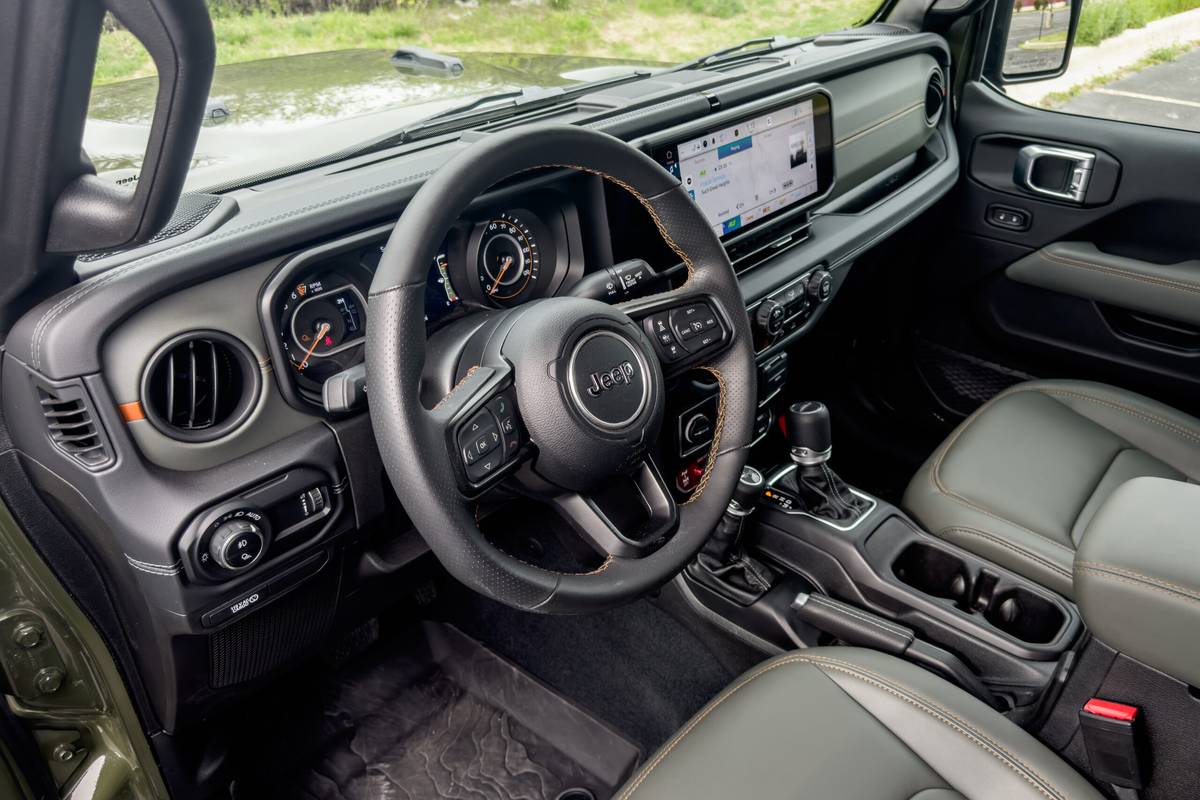
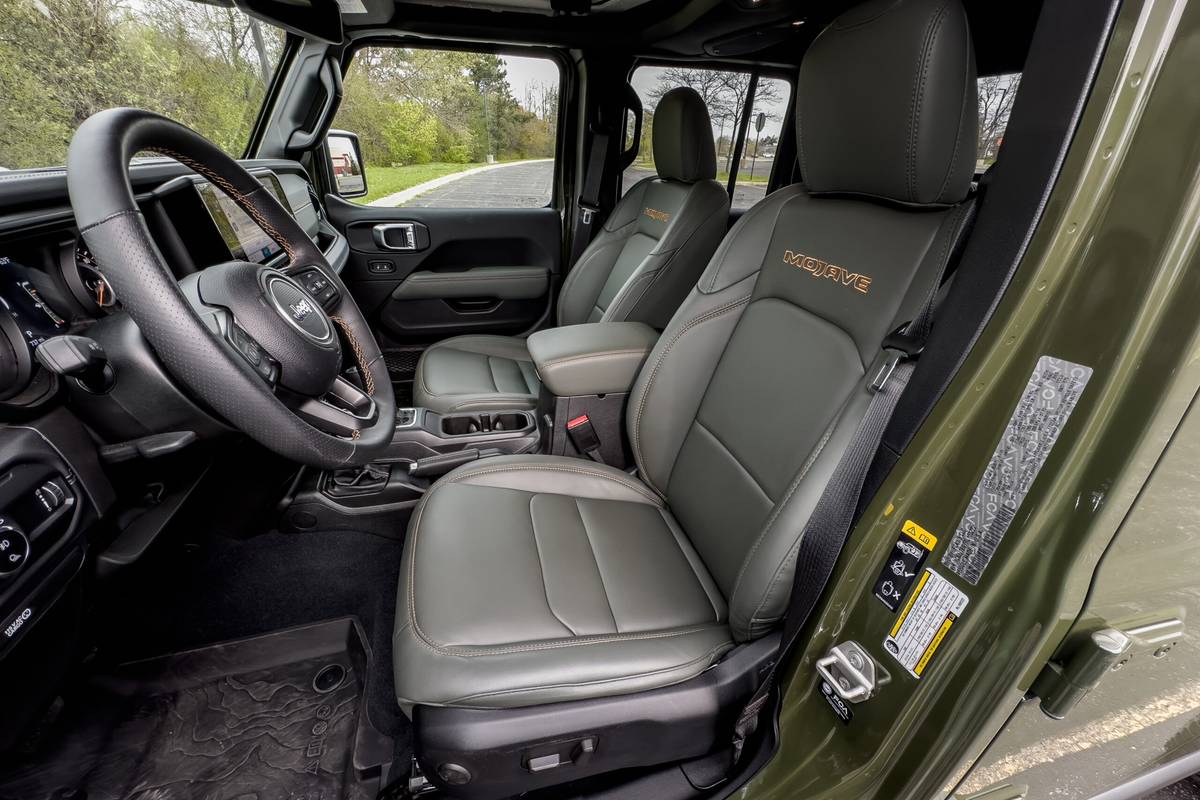
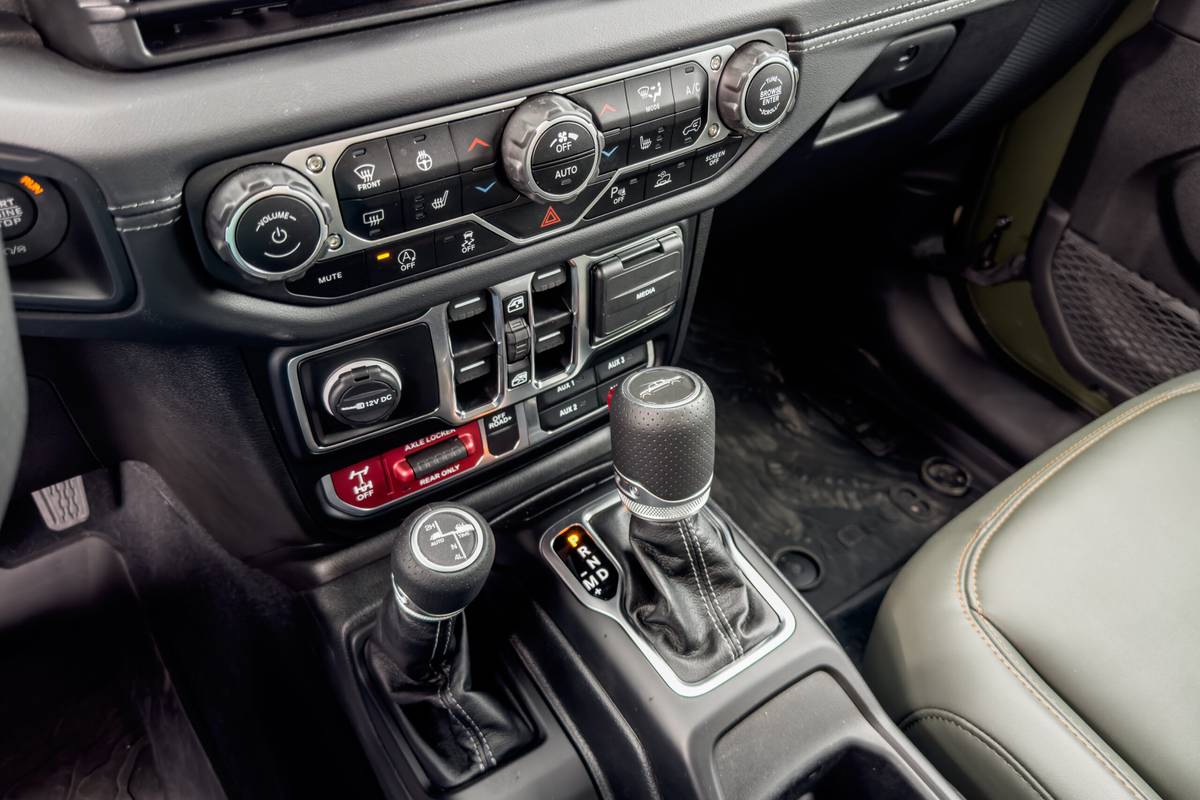
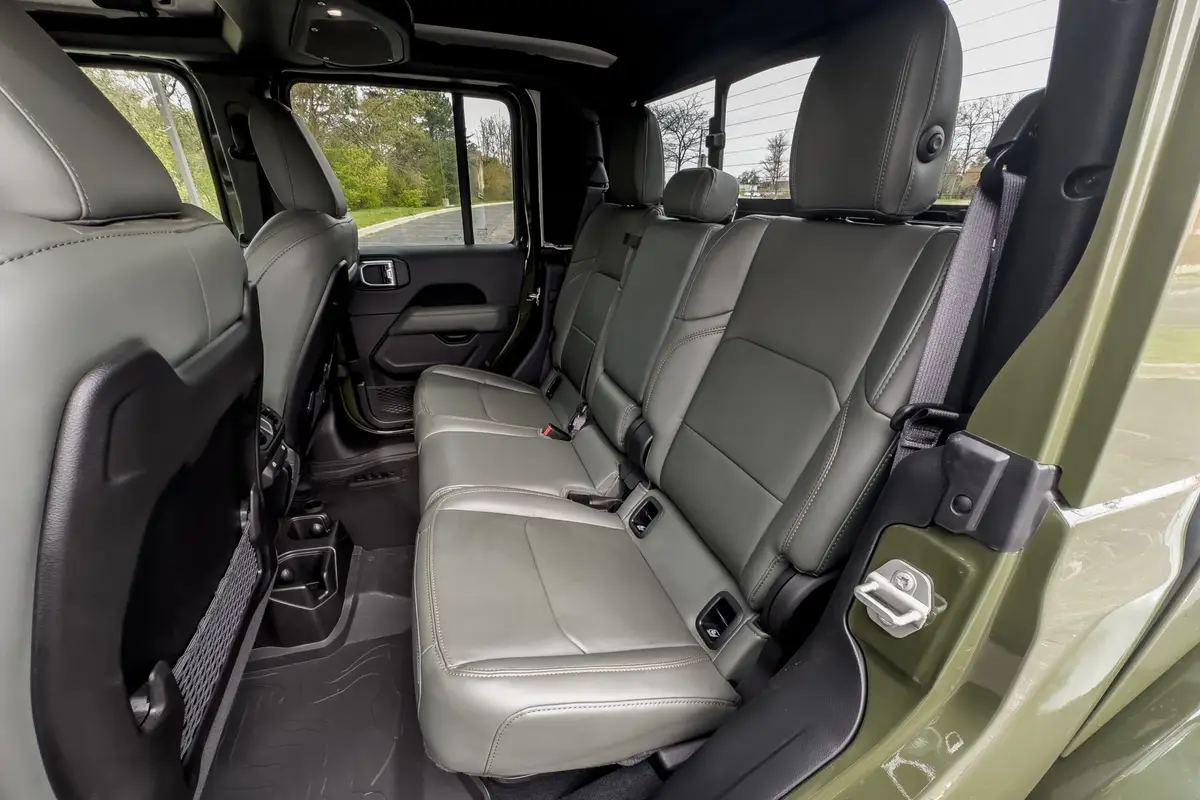

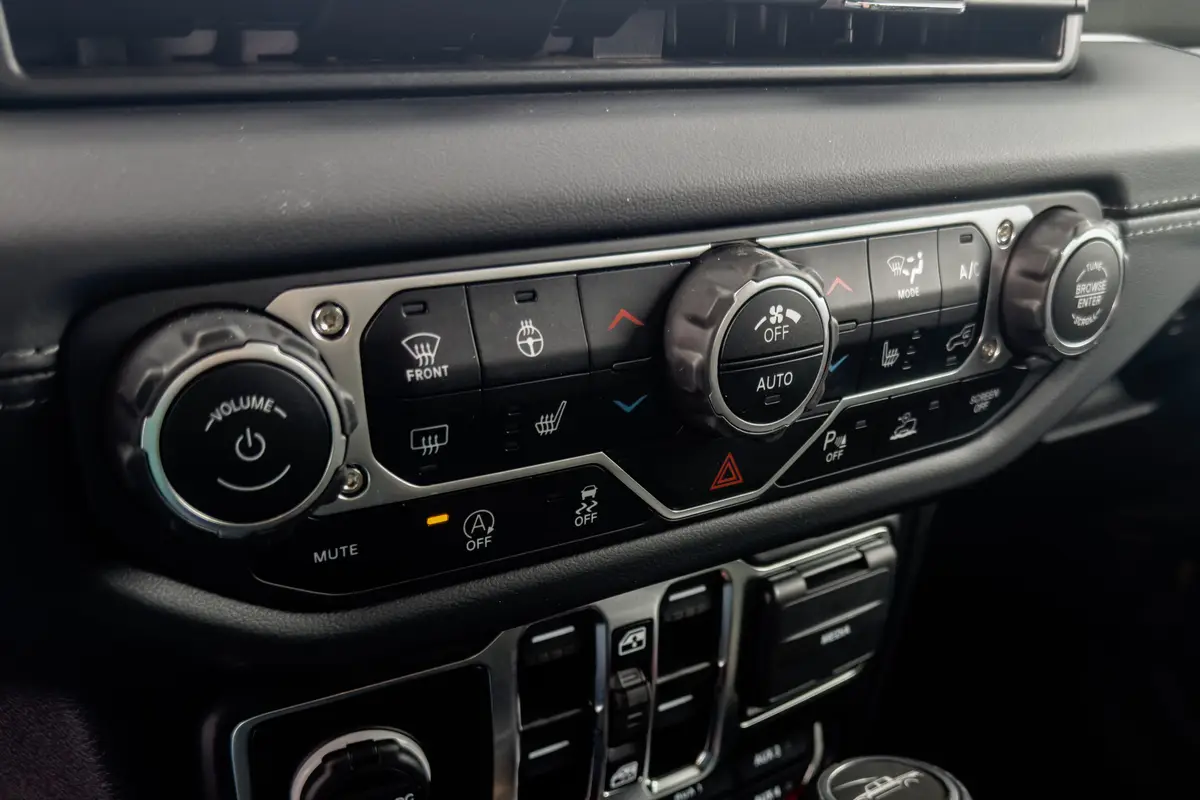
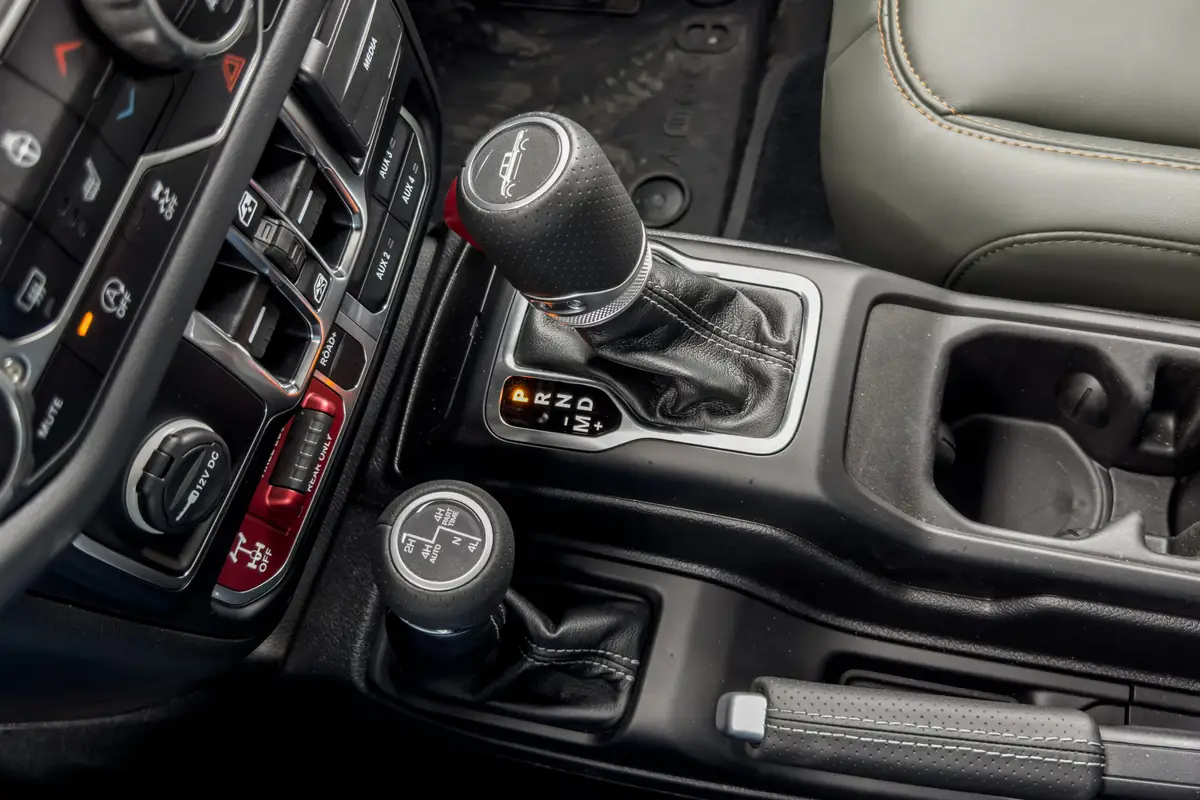
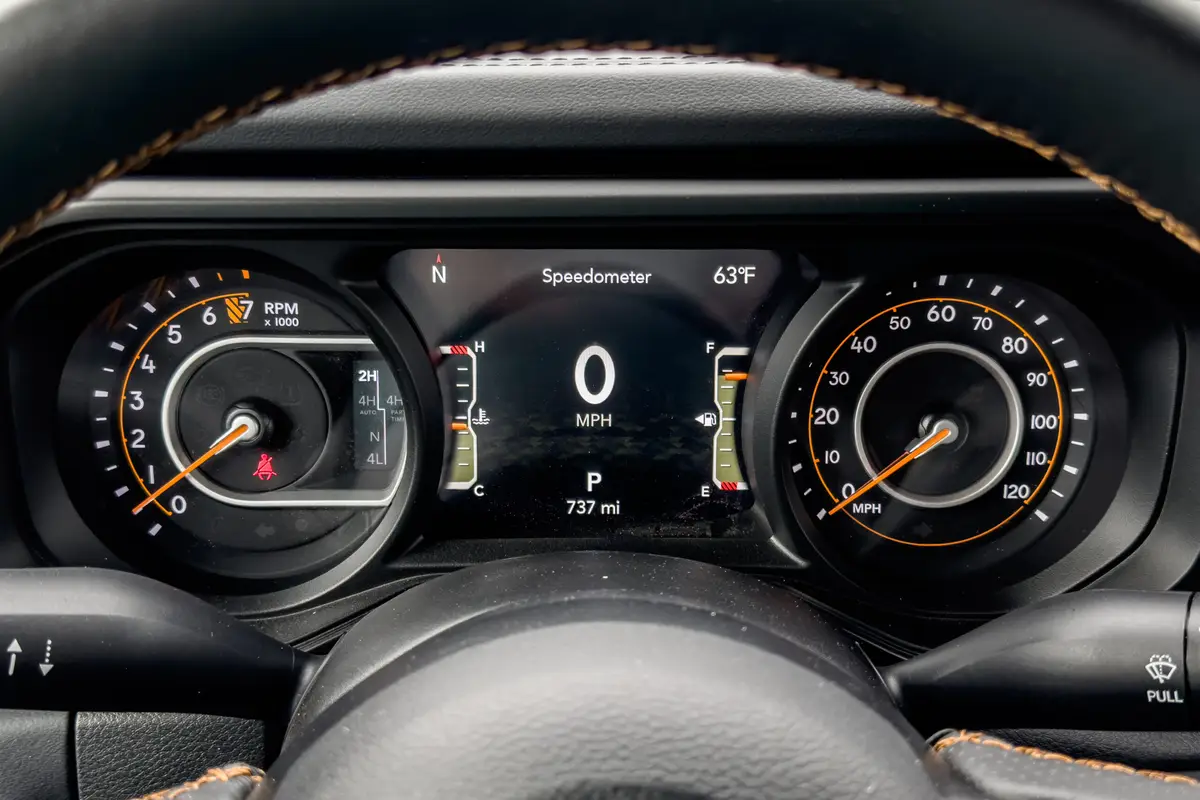
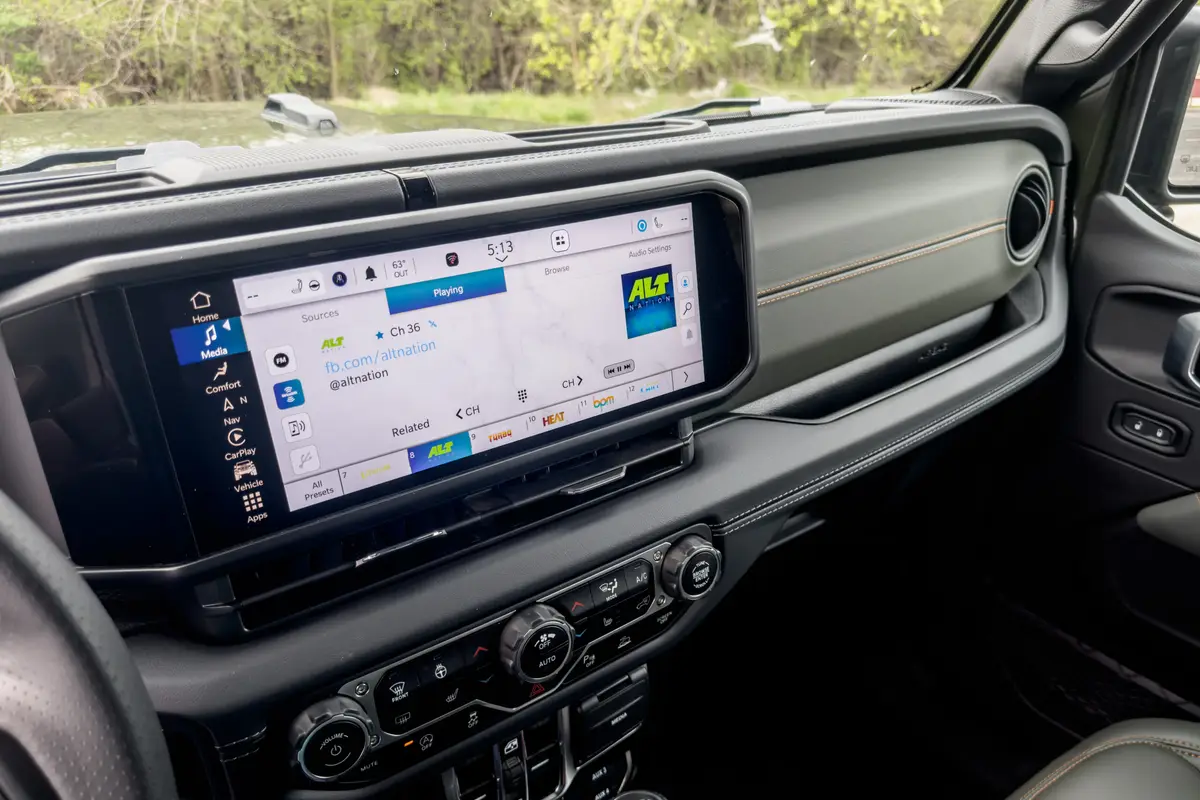










The rest of the interior is straight-up traditional Wrangler/Gladiator style, with the military-grade theme continuing inside. The Mojave trim is available with a green Nappa leather interior that looks fantastic, especially with the orange Mojave-exclusive trim bits. A new standard 12.3-inch touchscreen running the latest Uconnect infotainment system is the big news for 2024, and Uconnect still ranks as one of the best systems in the business to our eyes. Jeep hasn’t gone all touchscreen controls for its latest system, so there are thankfully still plenty of dedicated buttons and knobs for frequently used items, like audio, climate control and the 4WD system. A first for the Gladiator is the 2024 model’s available 12-way power front seats, something we’d always been told was impossible due to the Gladiator’s “hose-out” interior and water-fording capability. Standard side curtain airbags are new, mounted on the upper rails, but they present a problem for taller drivers: The airbags’ hard-plastic casings cut into headroom, so any lateral motion on a bumpy road or field will make you smack your temple into them. Repeatedly. Ouch.
Front-seat room is adequate, if a little cramped for bigger people — the seat doesn’t scoot quite as far back as I would like for my 6-foot frame — but the backseat is about as comfy as a four-door Wrangler’s, with adequate legroom and occasional-use three-across seating. Fold those seats flat and you have extra storage room, but there’s no pass-through to the truck’s bed — unless you just take the top off and straddle the forward cargo box wall. The bed itself is smaller than most mid-size pickups’ cargo boxes, but with the tailgate lowered and a bed extender, you can accommodate longer items, like dirt bikes.
It Doesn’t Come Cheap
Like all Wrangler-based Jeeps these days, the Gladiator does not come cheap, especially if you start optioning up a higher trim level with all the extra bells and whistles Jeep offers. A Gladiator Mojave X like this one starts at $64,890 (all prices include an eye-watering $1,895 delivery fee to get the truck to you from freakin’ Toledo, Ohio), but the as-tested price of my test truck was $71,320, which is an obscene amount of money for a vehicle like this. A Chevrolet Colorado ZR2 Bison starts several thousand dollars less, and its top price is less expensive, as well. A new 2024 Ford Ranger Raptor is more than $7,000 less than a Gladiator Mojave X and has a far more potent powertrain and a more comfortable interior. But Jeep is banking on buyers spending more for the Gladiator’s open-air convertibility, which no other competitor can muster. If that’s really all you want from your Gladiator, however, there are far less expensive versions than the Mojave that can scratch that itch.
More From Cars.com:
- 2024 Jeep Gladiator Gets Many of the Wrangler’s Updates, But Not All
- Hitting the Trails: Jeep Unveils 2024 Gladiator Texas Trail
- Jeep Celebrates Eclipse With 2024 Gladiator NightHawk
- Jeep Debuts 2024 Wrangler and Gladiator Jeep Beach Limited Editions
- Shop for a 2024 Jeep Gladiator
Related Video:
Cars.com’s Editorial department is your source for automotive news and reviews. In line with Cars.com’s long-standing ethics policy, editors and reviewers don’t accept gifts or free trips from automakers. The Editorial department is independent of Cars.com’s advertising, sales and sponsored content departments.

Detroit Bureau Chief Aaron Bragman has had over 25 years of experience in the auto industry as a journalist, analyst, purchasing agent and program manager. Bragman grew up around his father’s classic Triumph sports cars (which were all sold and gone when he turned 16, much to his frustration) and comes from a Detroit family where cars put food on tables as much as smiles on faces. Today, he’s a member of the Automotive Press Association and the Midwest Automotive Media Association. His pronouns are he/him, but his adjectives are fat/sassy.
Latest news



